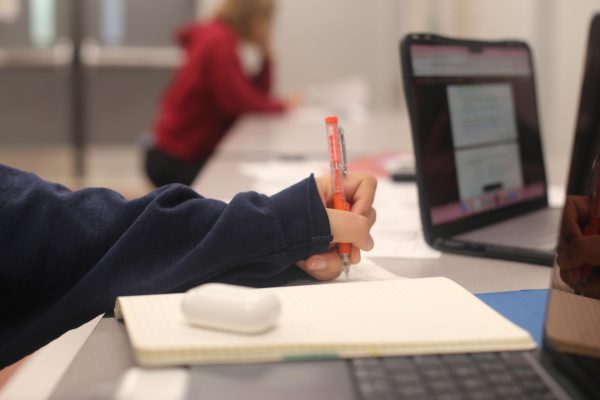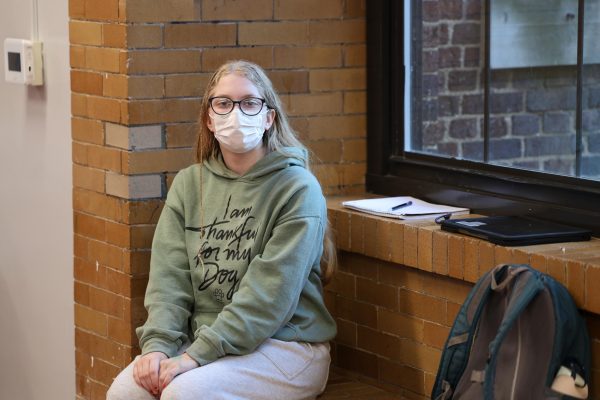What the heck is a regatta?: a history of classism and confusion
Among rows and rows of students, Pioneer senior Sophia Janevic anxiously matched the filled-in bubbles to the corresponding marks on her SAT test. If she knew a question, she was quick to bubble the answer and keep moving on. When she failed to answer correctly, she knew it could make or break her score, her applications, and everything lying beyond the testing room.
“This could be the question that ruins my whole future,” Janevic thought.
Not only have standardized tests like the SAT and ACT become a source of great stress for some teenagers, preparation and retakes can swallow hundreds of dollars for especially nervous test takers. Many students buy books and classes to prepare for these tests, but they also have to spend a large sum of money to take them, often multiple times.
An ACT test with writing — which most colleges require — is $62.50. Costs can add up to as much as $113.20 for one test, including late registration fees and score reports. The ACT can be taken up to 12 times, and the ACT organization recommends retaking it, as their research has concluded that 57 percent of 2015 graduates that retook the ACT improved their composite score by the second testing.
Public schools in Michigan offered a free ACT prior to 2015, but now have transitioned to one free SAT for every student, as have seven other states in the nation. While CollegeBoard — the organization that runs the SAT — partners with individual school districts and gives them a free test, students in the other 42 states and D.C. are not guaranteed a shot at this. A test could easily cost anywhere from $46 to $200.
Janevic took the SAT twice outside of the school, a total of three times, before she settled on her scores. To prepare for these tests, she bought prep books that average about $20 per book, as her school didn’t provide any of these materials.
Yet school-sponsored preparation varies between district and state. Some public schools have mandatory test prep classes, some offer an optional test prep class, and others offer none at all. There should not be an expectation that districts across the country be completely homogenous – that would be virtually impossible – but the location and wealth of a student’s community, and therefore the available resources, vary widely from places like inner-city Detroit to Bloomfield Hills.
It would seem like no surprise that a test taker’s parents’ education levels and income correspond to their children’s scores. CollegeBoard has published studies which show that students who have parents with higher levels of education are much more likely to score highly. In 2017, SAT takers with parents who had no high school diploma met the ‘college-ready’ benchmarks 46 percent of the time for English/Reading/Writing (ERW), and 26 percent of the time for math. As for children of college graduates (20 percent of the test takers), their benchmark statistics were almost twice as high than the first group of children; 88 percent in ERW, and 71 percent in math.
These trends create a caste-like system for test-takers. When a test used to determine college admission is influenced by the educational and economic background of their parents, the cycle of poverty – or if not poverty, a barrier from achievement – is perpetuated. If standardized test preparation itself was standardized, the national playing field could start to even out.
But many factors are at play here; while economic barriers from test prep and general college information put test takers at a disadvantage, some say that the questions themselves are unfair to students from lower income backgrounds. One question, which has since been removed from the test, caused particular controversy.
RUNNER: MARATHON:: was removed in 2005 after accusation of bias when many more black students failed to answer correctly than white students. Questions like the latter are rather rare in the new test. Yet, the idea of biased questions comes up time after time; not all students know the configuration of a baseball diamond, values regarding gifts differ between communities, and use of vocabulary is quite diverse throughout the nation.
Beyond question biases, test taking, and the stress of studying, applicants have to pay for sending in test scores, applying, and ultimately the most daunting cost of then all: hefty college tuition. If Janevic gets into one of the private universities she applied to, her tuition could cost at least $60,000 per year for a four or five year degree, without financial aid. Even with financial aid and a rare scholarship added on, poorer students are consistently at a disadvantage all throughout the college process.
From preparing for a standardized test to getting into college, low-income students experience impediments all along the way. And although struggling to pay for things is an implied burden for the economically disadvantaged, college gives these students an opportunity for economic success in the future. An extra barrier to college is an extra barrier to the avenue of a future less strained with financial worries.
Recently, colleges have been continuously evolving their admissions to accommodate lower income students and minorities, while free online test practices like Khan Academy are becoming more popular and accessible to all students regardless of income status. Yet for many, comprehensive preparation is well out of reach without extra money for books, materials, and experience.
“I had a second chance, and I did have the money to do it, and I know that not everyone does,” Janevic said. “Not everyone has the opportunity to take a class, or buy all the expensive books, and get all the extra help. Not everyone has those resources.”










